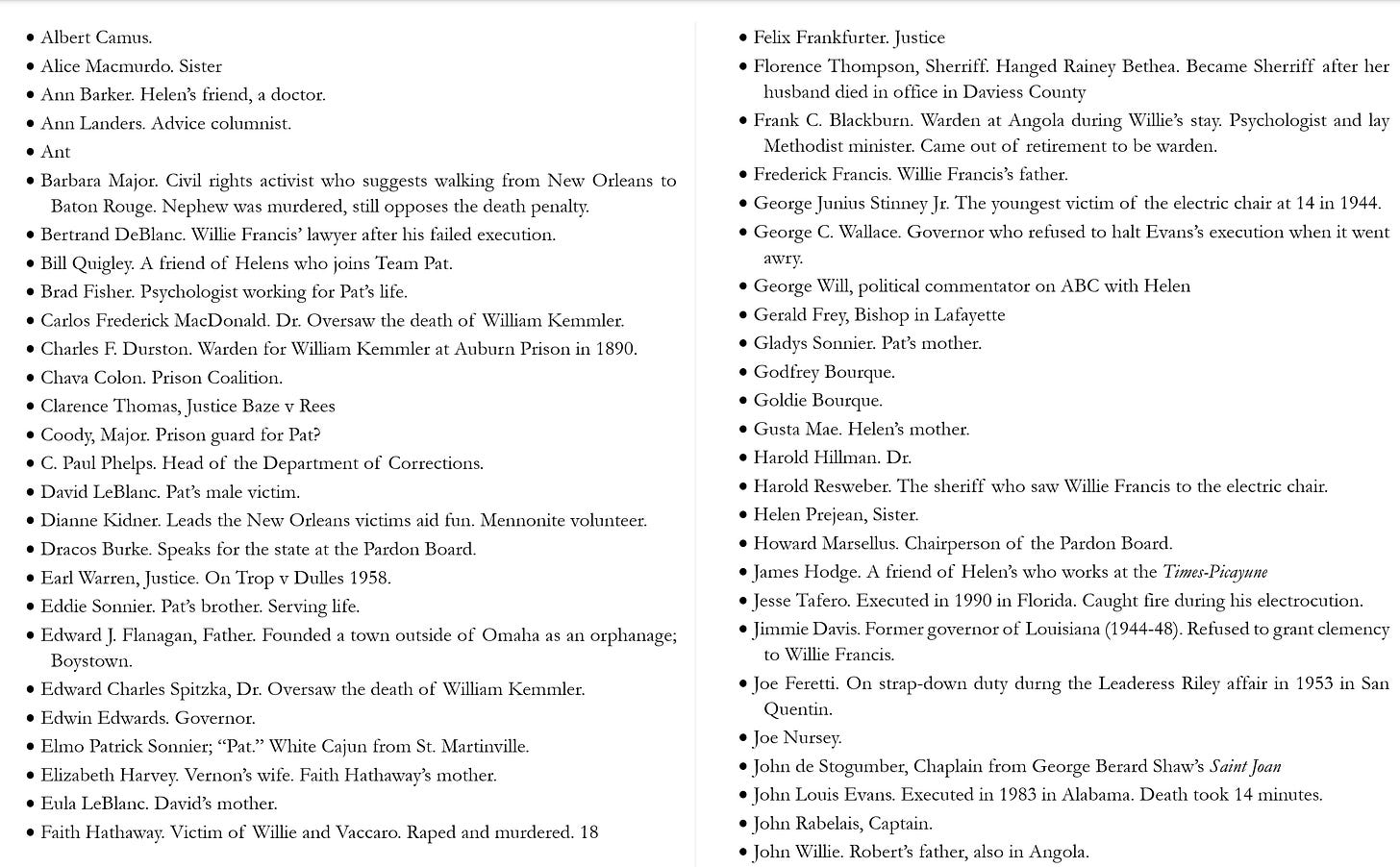If you regularly scan the acknowledgements page of books you read, you’ll notice a cast of commonly recurring characters: the author’s agent and editor, partners and other family members, members of a writing group, perhaps a particularly inspiring dog or cat.
Rarely, though, do you see authors acknowledging their copyeditor; and yet, copyeditors are the bacon savers of the author’s world.
The copyeditor’s ambit
I had only a hazy idea of what was entailed in copyediting when Graphic Dead Man Walking entered this stage in its production.
After Catherine and I submitted the completed manuscript, the illustrations and script entered a bifurcated editing process. While Catherine’s artwork went off on its own somewhat-hazy-to-me path, my script was given into the hands of a copyeditor under the aegis of Random House’s uber copyeditor—aka the Executive Production Editor—Dennis Ambrose.
While awaiting the return of my edited manuscript, I did a little reading up on what I might expect when the reviewed Word file was back in my hands.
I knew that the copyeditor would proofread my spelling, punctuation and grammar, and that they’d be on the lookout for inconsistencies in usage and tone and timeline, all while preserving my (read Sister Helen’s) voice.
What I didn’t understand, until I read this article [link] by Terry McGarry, was how deep down into the itty-bitty, nitty gritty details the copyeditor would dive. This passage was particularly eye-opening:
The cardinal rule of copyediting is Look Everything Up. The copyeditor must know where to look things up, and how to find out where when she doesn’t know. She’s not far from a phone, so she can make fact-checking calls as the need arises. She looks up every compound word, every brand name, every geographical and biographical name. If the book describes routes through existing cities, she makes sure the streets are contiguous; if the routes are through imaginary places, she’ll sketch a little map. She will check quotations, foreign words and phrases, even such things as whether a constellation is visible from a certain point on Earth at a certain time of year.
Oh my!
A treasure trove
Having done this research, it came as no surprise to receive a minutely examined, highly detailed, immaculately documented package from my editor this week, containing a cover letter with guidance, a custom stylesheet, and the copyedited manuscript itself.
In addition to general style points and a Random House usage guide, the stylesheet included lists of every person, place and organization mentioned in the book, plus a list of references used for fact checking. The character list alone went on for four pages. Scanning it and the other lists gave me a new appreciation of the ground we’d covered.
Team writing
On top of the multitude of tasks that fall to a copyeditor, there is the added responsibility of conveying their recommended amendments, corrections and clarifications with diplomatic flair. It’s not uncommon for an author to be touchy, possessive, even blinkered; it’s the copyeditor’s job to suggest changes so deftly that authorial feathers remain, if not completely unruffled, then at most merely slightly disturbed.
For me, opening the copyedited manuscript of Graphic Dead Man Walking filled me with gratitude. At each point where I might have appeared careless, clueless or inconsistent had the untouched manuscript been made public, my copyeditor, Dawn Davis, had stepped in and saved the day.
Although the manuscript didn’t call for heavy copyediting intervention, I know Graphic Dead Man Walking will be a much better book thanks to Dawn’s invaluable work.
To copyedit or to copy edit?
I find it almost impossible to write about copyeditors and copyediting unselfconsciously. I look back over each sentence and think, “Hmm, is that contrary to house style?” or “What would my copyeditor think?”
It’s therefore somewhat gratifying to discover that copyeditors themselves have ongoing—let’s call them ‘discussions’—about whether they are copyeditors, copy editors, or copy-editors, and whether the task they perform is a single word, two words or a hyphenated conglomeration.
In her blog post on the topic, author and editor Debbie Emmett describes resorting for guidance to Google Books Ngram Viewer [link], a tool which lets you compare word usage over time within a very broad ‘corpus’ of books. She discovered that the single-word version is on the up and up.
This prompted me to run the phrase ‘dead man walking’ through the Ngram Viewer. The result highlights the impact that Sr. Helen Prejean’s original book, published in 1993, had on our language:






It’s so interesting to learn more about the whole process as I follow your newsletter. I can proofread, but copy editing is a very different thing. I know that you don’t have a fragile ego, but I’m sure a lot of authors do. Kudos to the copy editors, and kudos to the authors who not only accept the input of the copy editors instead of getting their feathers ruffled, but also embrace the input and acknowledge its value. When I read a book, I often find myself thinking “Edit! Edit!” I can often tell when there wasn’t the budget for a good copy editor.
Very interesting Rose, although my first reaction to the “cardinal rule” was why? It seems like they almost make a copy of the book in the process- if I want to read the name Camus, I’ll read it Helen’s book, not their list of characters! But I’m not a budding author so I know I’m missing the point. Being an old retired man now, I often read the acknowledgments although the Authors’s Note at the end of The Aviator’s Wife was far more interesting. Roll on 2025!